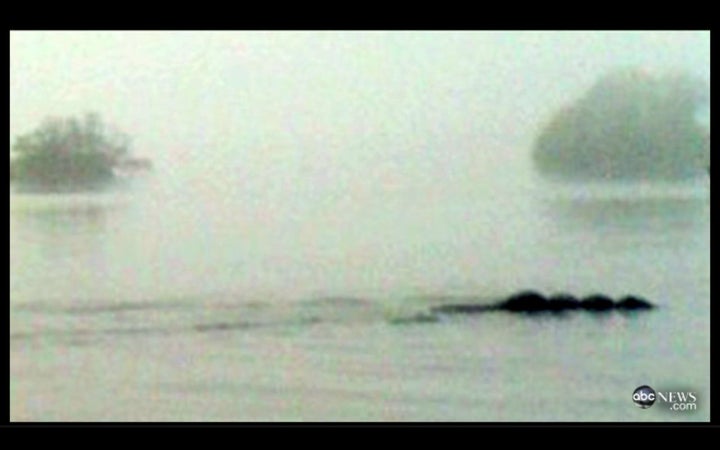
What if conclusive evidence surfaced that proved the monster of Loch Ness did exist... but it turned out to be a giant eel or fish instead of a plesiosaur? The simple truth is we would feel disappointed and cheated.
After being a lifelong fan of Nessie, I finally decided to stop overlooking the multitude of inconsistencies surrounding this enigma and consider the evidence. I concluded this creature, whatever it may be, is not a plesiosaur. I indeed felt cheated that my world contained one less mystery, but exhilarated that I had one more truth under my belt.
Stories of a monster inhabiting Loch Ness date back more than 1,500 years. None of them, however, described a long necked serpentine creature until the 1930s. In the beginning, Nessie was a murderous creature the locals called the Kelpie. It would shape shift into a beautiful horse that enticed passersby into riding on its back across the Scottish countryside, only to later plunge them into the loch and eat them.
In 1933, Mr. and Mrs. Mackay were driving along Loch Ness. Mrs. Mackay reported to a local reporter that she saw a large beast splashing around in the loch's center. The story instantly became headline news in the Inverness Courier and instigated the modern era of Loch Ness Monster sightings.
Then in 1934, Colonel Robert Wilson snapped the famous "Surgeon's Photo" of Nessie. It shows a small head and long neck rising from the water. The plesiosaur theory was born and dramatically shaped subsequent testimonies. Christian Spurling, a close friend of Wilson, admitted the photo was a hoax shortly before his death in 1993. Spurling had helped Wilson sculpt the figure which was attached to a toy submarine for the photo. But what if Spurling had lied about his role in perpetrating this hoax? Why should we take his word over Wilson? Maybe it was a legit plesiosaur portrait. Not likely. In 2006, Leslie Noe published an article in New Scientist titled "Why the Loch Ness Monster is No Plesiosaur." In this article Noe wrote "The osteology of the neck makes it absolutely certain that the plesiosaur could not lift its head up swan-like out of the water."
- Plesiosaurs were probably cold-blooded creatures that lived in tropical waters. The average temperature of Loch Ness is only about 42 °F. Brrrrr!
- Even if plesiosaurs had been warm-blooded, they would require more food than Loch Ness can supply. Notice I said "they". The loch's food supply includes salmon, sea trout, brown trout, pike, eel, char, lamprey, stickleback, sturgeon and flounder -- plenty of food to support an aquatic dinosaur. Here's the rub, science has demonstrated at least 30 plesiosaurs would be required to sustain a viable colony over time, and this is not enough grub for Nessie's extended family.
- Plesiosaurs breathe air. If this relatively small lake had 30 plesiosaurs breaking its surface periodically for air, sightings would be commonplace for the tourists descending upon the loch daily.
- Surely modern technology could somehow detect a platoon of elephant sized dinosaurs living in this diminutive ditch of a lake. In 2003 the BBC sponsored a search of the loch using 600 sonar beams and satellites. The result, of course, being they didn't even find one plesiosaur. (View larger map.)
Pretty convincing stuff, huh? For me, here's the smoking gun: Plesiosaurs went extinct 65 million years ago. We are talking 65,000 centuries! Loch Ness, however, was gouged into the ground only 10,000 years ago, during the last ice age. Is it possible Nessie inhabited this loch 64,990,000 years before it even existed?
It gets better. The entire region was buried under 4,000 feet of solid ice for the 20,000 years prior to Loch Ness' formation. How could 30 dinosaurs survive for 20,000 years under 4,000 feet of ice in a lake that didn't yet exist?? I can't even keep fish sticks from getting freezer burned between grocery trips (huh?).
If, after reading this blog, you slip into a depressive state because this quintessential lake monster myth is generally busted, I offer you hope in two words: sea monster. It has taken almost 100 years for science to effectively debunk plesiosaurs living in Loch Ness, which is 1 mile wide, 24 miles long and 800 feet deep. At this speed, it will take a thousand more years for the skeptics to debunk sea monsters. Earth's combined ocean surface area is 139 million square miles, with a maximum depth of 36,000 feet. And here's a final bonus for sticking with me throughout this windy blog: Scientists estimate that 230,000 ocean species are currently known, but the ultimate total could be up to 10 times that number. Happy hunting.